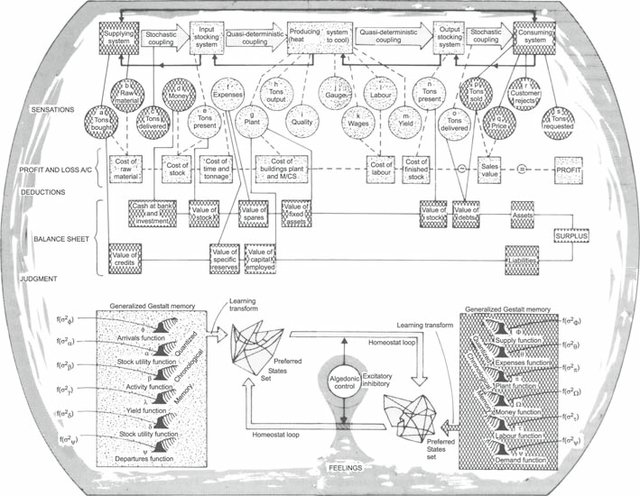With Cities of Things, we look at intelligent (behaviour of) things in our future cities. Robotics combined with an intelligence agency. Last week I attended a lecture by James Bridle, who wrote a book last year on other intelligence last year (Ways of Being), that I liked a lot. They showed how there is more than human intelligence and how these can inspire us. Bridle also made a link to how computing is designed still around the Turing machine. There is another concept that Turing once hinted at in a footnote (1) in his first paper on the automated machine, and later a bit more in the 50s in another paper, but never was able to flesh out. In short, the difference in computing concepts is the way it computes intelligence. The Turing machine uses as much of the existing information and generates the intelligence internally in the system. The Oracle machine is using the art of making theses and the learnings from responses to build intelligence, a machine that is looking outside itself to build knowledge. The lecture by Bridle will be online sometime soon I expect, but he explained the concept in earlier lectures like this one.
Last week Noam Chomsky wrote an opinion piece in The York Times on why ChatGPT offers a false promise (2). I see links here, and interesting enough, the thesis of Chomsky is built upon the notion that current machine intelligence is based on a limited form of computing. At the same time, you could make a case that the form of accessing this machine intelligence via the chat-routine is testing the promise of the oracle machine. On the verge of the introduction of GPT-4 it is useful to think about what we can learn from the application of GPT-3 in the world through these new interfaces, and what we need for the next iteration.
What is missing in the current models is an ability to learn, and to reference a general mental model of the world. If we are using the current tooling right, we make sure that these models (morality) are provided by the human in the loop. We need to be sure there is a human in the loop in using the tooling. And to be sure, having a human in the loop is not the same as a human using machine intelligence to provide answers to questions formulated by humans. It is definitely true that asking the right questions is key, and that is why prompt engineering is such a highly valued expertise in the near future. The example in the article of Chomsky is a speaking example.
The design of these tooling should facilitate, or even more maybe steer, the right flow of theses and claims. The human actor should always create a moral framework before the machine is asked to ‘oracle’ based on general knowledge, and the final judgement is also to the human. In the most sophisticated versions of this tooling, the AI can help to formulate the best claims. I wrote earlier on the concept of co-performance which provides some insightful poses. A useful metaphor is also the centaur, the half-human, half-machine; that is what we are developing more quickly than we might have expected. The most important challenge is to balance the right tasks for the machine and the human.
The image and reference that Bridle uses from the Cybernetic Factory by Stafford Beer (1959) is a possible implementation design. The goal was to create a better way of automating factory processes by using all kinds of outside knowledge and building a complete ecosystem. Bridle connect it to learning from other intelligence like how slime moulds can solve the traveller problem much more efficiently than our current computers can do.

What was not discussed is the relation of the current interaction model within tools like ChatGPT and the possibility of building a kind of Oracle Machine. It feels almost too simple to connect these; what if we can use the power of the dialogues with intelligence in a real learning environment, and what if the outcome is a new form of ecosystem computing? The biggest learning from the upheaval around the use of ChatGPT for all is that we should take into account what the value of the knowledge is. If we can build in the right human guardrails in the oracle machine we might be able to loosen up the limitations of current implementations.
Notes
(1) “We shall not go any further into the nature of this oracle apart from saying that it cannot be a machine” Alan Turing, Systems of Logic Based on Ordinals (1939)
(2) The oped of Chomsky has triggered a debate, Gary Marcus is reflecting on this debate here.
(This post was published earlier via the Cities of Things newsletter)
